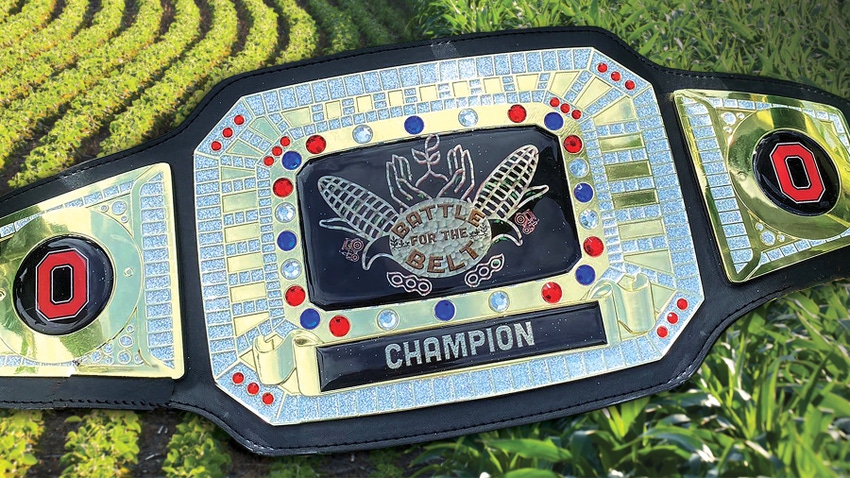
Which should you plant first: corn or soybeans? The most-hated answer applies: “It depends.” Where is your farm? What will weather be like? How big is your planter? Do you have two planters?
Start with two easier questions: Which planting dates are best for corn? For soybeans? Both crops respond to early planting. Long-term data proves this.
What data says
Here’s one example. “We have 26 years of planting-date comparison studies for soybeans in our Practical Farm Research program,” says Steve Gauck, a regional agronomy manager with Beck’s. “From April 1 through May 15, there is virtually no difference, with April 16 to 30 being the absolute highest-yielding stretch. Yields drop off in June.”
Trends are similar in corn. Based on 23-year, multiple-location data, yields as a percent of mean yield for various planting windows are:
March 16-31, 96%
April 1-15, 102%
April 16-30, 107%
May 1-15, 105%
May 16-31, 100%
June 1-15, 88%
June 16-30, 81%
Like for soybeans, April 16-30 is the highest-performing planting date range for corn.
New approach
The Battle of the Belt challenge started in Ohio in 2023. Osler Ortez, Ohio State University Extension corn specialist, and Laura Lindsey, OSU Extension soybean specialist, want to determine whether corn or soybeans should be planted first.
The challenge involves five planting date ranges, three locations, four hybrids from 100- to 115-day maturity, and four seeding rates for soybeans from 100,000 to 210,000 seeds per acre. Locations are Wood County in northwest Ohio, Clark County in west-central Ohio and Wayne County in northeast Ohio.
“[2023] was an odd weather year, but lately most are odd,” Lindsey notes.
Ortez adds: “Weather impact is one of the variables you must consider when deciding which crop to plant first. Also consider things like weed, pest and disease management, crop fertility management, commodity prices, and economics.”
1st-year results
Here are results from 2023:
Variable best dates. Corn yields were highest for the first three planting dates in northwest Ohio. Yield dropped off sharply for corn planted after May 11. The best planting dates for soybeans occurred in April, with yields slowly declining for May and June plantings.
In northeast Ohio, May 11 was best for both crops. Corn planted earlier was impacted by a cool, wet start, Ortez says. For soybeans, final population was under 40,000 for April plantings, due to a combination of weather, diseases and insects, Lindsey adds.
Conditions vs. calendar. “May 25 was the best time to plant corn in west-central Ohio, believe it or not,” Ortez says. “It was wet early; then it turned dry. Roots didn’t develop well. Floppy corn developed. Corn planted May 25 didn’t suffer from it. We’re not advising planting corn on May 25. We’re simply reporting what we saw at one location in one year.”
Ortez notes that this challenges the recommendation of planting corn at the end of April into early May. “Results are teaching us to look at field conditions versus calendar dates,” he says.
“Soybean yield was not affected by adverse weather here,” Lindsey notes. “The first planting date in mid-April averaged 91 bushels per acre.”
Hybrid differences. The full-season, 115-day hybrid planted early was best in the northwest Ohio trial. In northeast Ohio, 107- and 115-day hybrids performed best on May 11. The 107-day hybrid hit 275 bushels per acre planted May 25 in west-central Ohio.
1-year gleanings
Here are takeaways from the first year of the study:
Soybean yields were more stable. Soybean yields were more stable across planting dates, Ortez says. Corn yields were more erratic, influenced more drastically by the environment.
Planting delays decreased soybean yields. Soybean yields decreased consistently at later planting dates. The only exception was in northeast Ohio, where yields for early-planted soybeans were impacted by extremely low plant populations.
Corn planting trends were less consistent. “Sometimes planting corn early was OK, and sometimes it was better to plant in May, even late May,” Ortez says.
There is more to learn. The Battle of the Belt continues in 2024 and 2025, researchers report. Look for a deeper dive into the dynamics of weather, weeds, insects, diseases, grain quality and economics.
Low temps coming? Beans can take it
Common logic once said plant corn first because it can withstand colder temperatures. Even five-leaf corn could recover from frost. If soybeans freeze, it’s game over.
Today, “common knowledge” must be tweaked. It’s true that soybeans don’t recover if seedlings freeze. However, testing by seed companies and universities demonstrates that it takes much colder temperatures than once thought to severely injure soybeans.
An Indiana Prairie Farmer cover story in the second March issue in 2001 cites data from a joint study by Beck’s and Purdue University. Three stages of growth, from emergence to first trifoliate, were subjected to temperatures of 32, 29 and 26 degrees F for 30 minutes, two hours and four hours in Purdue growth chambers.
Only the biggest plants exposed for the longest times and coldest temperatures showed damage. Kevin Cavanaugh, then director of research for Beck’s, remarked, “We didn’t go cold enough!”
In a later test by Beck’s, it took six hours at 25 degrees to reduce stands of unifoliate-stage soybeans by 50%. Some plants survived 23 degrees. They can take it.
Read more about:
Early PlantingAbout the Author(s)
You May Also Like




